Nissan X-Trail e-Power review: Is it better than a Toyota RAV4 Hybrid?
What is the Nissan X-Trail e-Power with e-4ORCE?
This is Nissan’s take on an electrified, but not full EV, future. Mitsubishi does plug-in hybrids (like in the Outlander), Toyota does conventional hybrids (like the RAV4), and Nissan does e-Power.
We will get to how it all works in a moment, but the short version is that, while you still get a petrol engine with your electric motors, the former is only used to recharge the battery or deliver power to the motors — it never actually drives the wheels — giving you what Nissan calls an “EV-like” drive experience, and improved fuel efficiency.
And therein lies the rub. It’s not actually as fuel efficient as a conventional hybrid (and, for now at least, it’s more expensive, too), but Nissan says it’s far more fun to drive.
Which of those points matters more is up to you. This is our Nissan X-Trail e-Power review.
What does the Nissan X-Trail e-Power cost?
While Europe gets e-Power technology filtered across its model ranges, Nissan in Australia has opted to debut the tech on its two most expensive trim levels, the Ti and Ti-L. And that means it’s not cheap.
The Ti will set you back $54,190 before on-roads, while the Ti-L will set you back $57,190. Both those numbers are $4200 more than you’ll pay for the all-wheel drive ICE equivalent.
You can get into a Toyota RAV4 Hybrid for $40,550, but Nissan does say it will look to expand the tech across cheaper trim levels in the future. And it’s worth pointing out that both the Ti and Ti-L get e-4ORCE, which adds a second electric motor at the rear axle, giving you both more power and more AWD, along with a seriously swollen equipment list.
What do you get in the Nissan X-Trail e-Power?

That $4200 premium goes into the EV tech, not the equipment list, so you can expect the same level of kit you’ll find in the ICE-powered equivalents.
In Ti guise, that means 19-inch alloy wheels, LED lighting front and rear with matrix headlights, a panoramic sunroof, privacy glass at the rear and a powered boot.
Inside, there’s tri-zone climate, leather-trimmed seats, a digital rear-view mirror, wireless phone charging and four USB ports (two up front, two at the rear).
You’re greeted by a ton of tech in the cabin, too, with a 12.3-inch digital driver display, a second 12.3-inch central touchscreen, and a 10.8-inch head-up display. CarPlay and Android Auto are along for the ride here, too.
Shelling out on the Ti-L trim adds bigger 20-inch wheels, better Nappa leather seats, a heating function for the steering wheel and rear seat, and a 10-speaker Bose stereo. The boot gets a motion sensing function (which you’ll never use), there’s a remote engine start function (which you’ll never use), and rear door sunshades (which you’ll definitely use).
How safe is the Nissan X-Trail e-Power?
It’s got the maximum five-star ANCAP safety rating, and both trims share the same safety equipment.
And to Nissan’s credit, it’s a sizeable list.
There’s a digital around-view monitor, front and rear parking sensors and a rear seat alert that reminds you to check the backseat when exiting the vehicle. Also cool is Nissan’s ProPILOT semi-autonomous tech, which will keep you at speed and in your lane on a freeway. It’s not flawless, but it’s a decent safety net if your attention wanders.
Also on board are things like AEB that detects cars, people and bicycles, active cruise, rear cross-traffic alert, junction assist and a drive fatigued monitoring system.
What is powering the Nissan X-Trail e-Power?
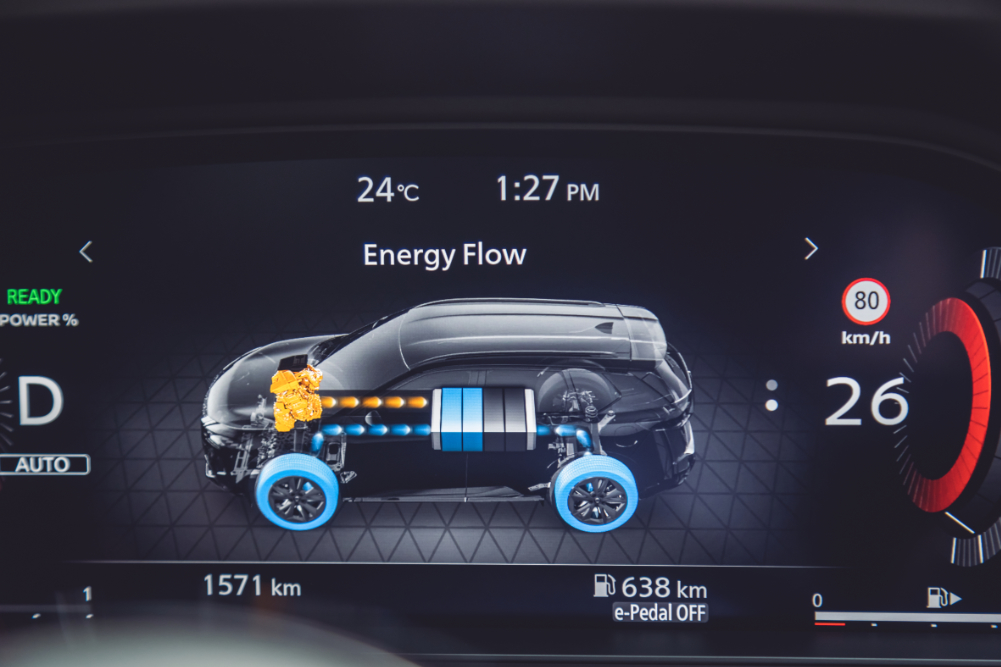
Ah, this is where it gets interesting. And it takes a little explaining, so stay with me.
The e-Power with e4ORCE system begins with an electric motor positioned at each axle that provide the driving power. The power can be sent front or back — or even left to right — to maximise traction in slippery conditions.
Those motors drive the wheels by themselves, like they would in an EV. But unlike in an EV, they can call on more than just the battery for their power.
Because where Nissan’s solution gets slightly complicated is the addition of a 1.5-litre, three-cylinder turbo-petrol engine. Its role is not just to keep the small lithium-ion battery topped up (what’s known as a ‘range extender’), but also to deliver additional electricity to the electric motors when required.
So when you accelerate hard, you can hear the petrol engine doing its thing, but it’s sending its grunt to the battery and the electric motors, which are in turn driving the wheels.
How big is the Nissan X-Trail e-Power’s battery, what is the driving range, and how long will it take to charge?
Under the front seats lives a 2.1kWh lithium-ion battery that provides a slightly mysterious EV driving range of “around two to three kilometres” depending on conditions (the only advantage is short-term near-silent driving, because the engine will be used before long to recharge the battery)
So this is not really a part-time EV like a plug-in hybrid might be, but rather a take on a hybrid solution designed for all power sources to be working all the time.
The fuel use is an official 6.1L per hundred kilometres on the combined cycle, which is about 30 percent higher than the 4.7L/100km offered by the RAV4 Hybrid.
How does the Nissan X-Trail e-Power drive?
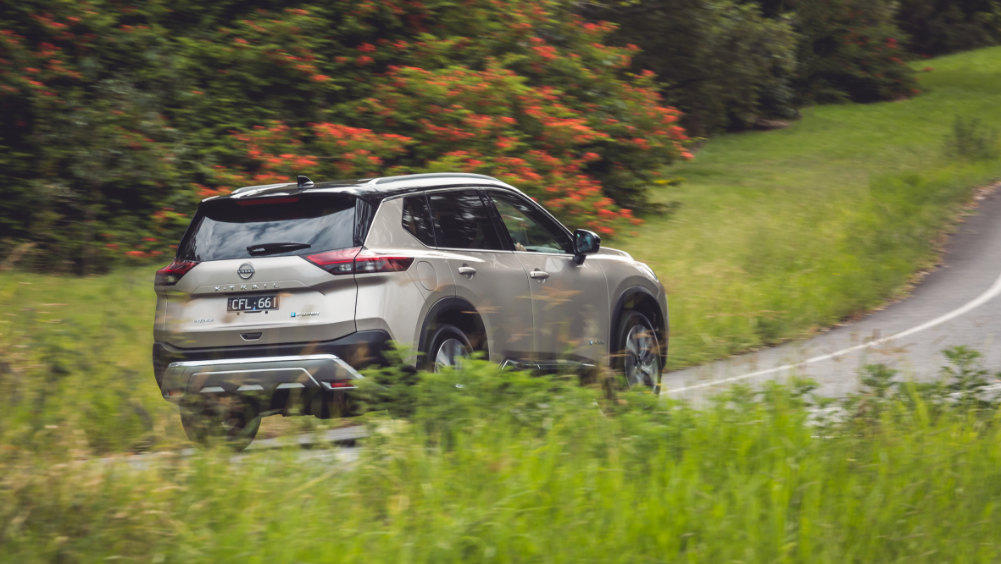
It’s smoother and quieter than a conventional hybrid, helped in no small part by the lack of a CVT automatic, and by the fact the petrol engine works quietly, mostly in the background.
But there’s more clever things afoot here which help the drive experience. For one, while no sports car, Nissan’s electrified X-Trail is no slouch, either, with 100km/h arriving in around seven seconds flat.
But even more important, the e-Power’s electrified set-up delivers little gains across the drive experience. Faced with a corner, the e-Power system can direct more power to the outside wheels (by applying brakes to the inside wheels), delivering faster, more confidence-inspiring turn-in.
The same thing happens (only front-to-rear) when accelerating or braking, helping keep the X-trail feeling flat and steady under hard acceleration or when you’re heavy on the brakes.
The result is a family focused SUV that genuinely falls into the fun-to-drive camp. We dispatched a lot of kilometres on our test route, and the X-Trail was quiet, comfortable and stable-feeling across the board.
Nissan describes the drive experience as EV-like, which is pretty accurate. Certainly the power is available quickly, but there is the (almost) ever-present rumble of a petrol engine to remind you that this is no pure BEV.
It is, however, a very convincing take on a more efficient ICE SUV.
What is the ownership of the Nissan X-Trail e-Power?
The X-Trail e-Power is covered by Nissan’s five-year, unlimited-kilometre warranty, with servicing required every 12 months, or 10,000km.
You can pre-pay your service costs for up to five years, and you’re looking at around $470 per annum (the price goes up or down slightly depending on how long you choose).
Nissan X-Trail e-Power verdict:
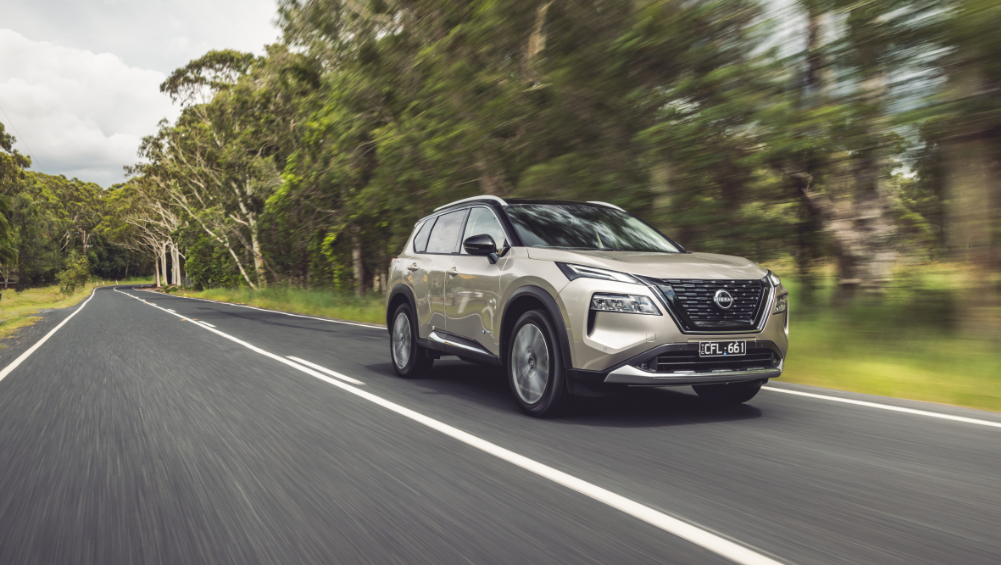
This is more than a technological curiosity. Nissan’s take on part-electrification has produced a convincing, and enjoyable to drive, SUV that’s no less practical than its ICE-powered siblings.

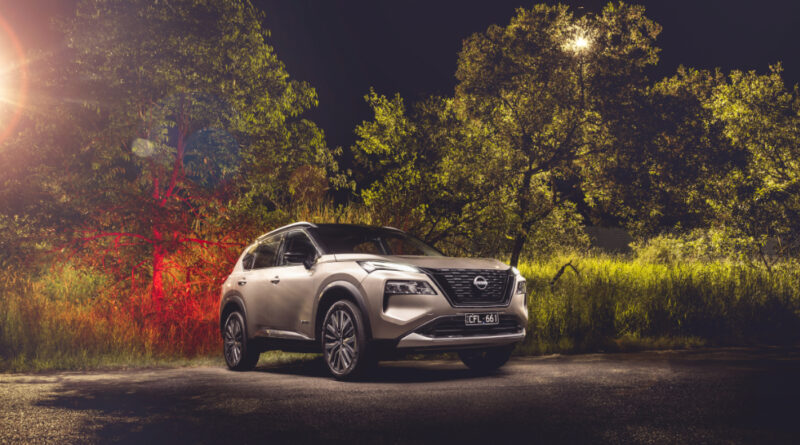
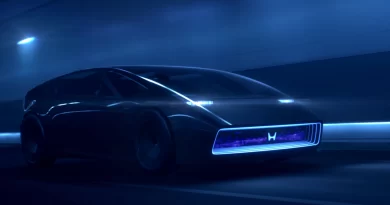
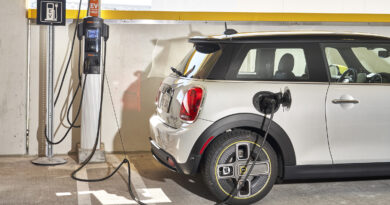
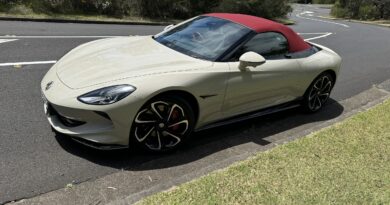
If the E-power can fit a 10 kwh battery or 2 x 5 kwh packs at least and run longer like 10 klms or more before engine support, it will be very much excepted any where in the world for long distance travel, like middle east and australia.
Also if you run low on fuel or out of fuel you have the safety of making a fuel stop in the middle of the night.
The environment and your pocket will love it!!